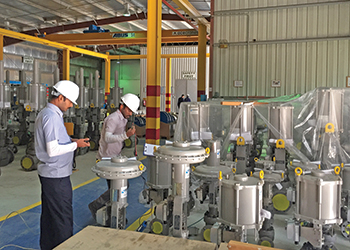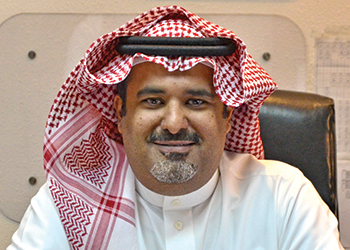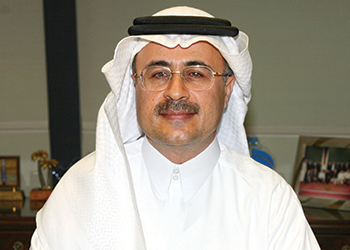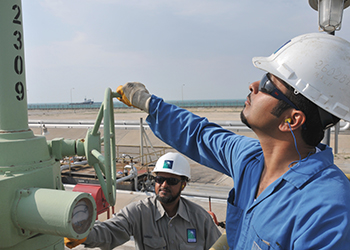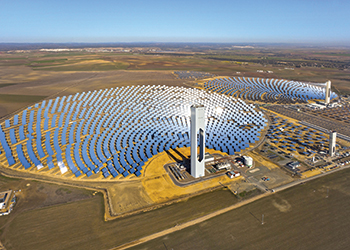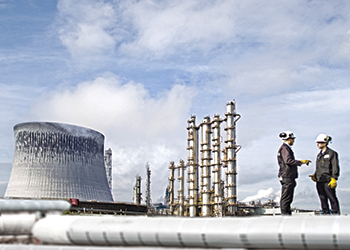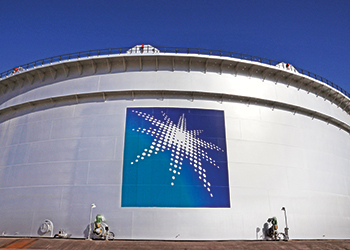
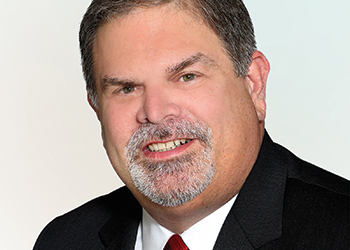 McAvey ... more improvements will be required
McAvey ... more improvements will be required
Middle East oil and gas firms understand that for cybersecurity there is not a quick fix. They must relentlessly work to continually improve their risk management, RICH MCAVEY, research vice president, Oil and Gas, Gartner, tells K S SREEKUMAR
Middle East oil and gas firms need to clean up and consolidate their information technology architecture in one site, with one optimised connectivity line back to headquarters.
Telecommunications have solved this issue years ago, and now oil and gas companies have to do it to their own sites, says Rich McAvey, research vice president – Oil and Gas, Gartner.
"For most Middle East oil and gas firms, their information technology architecture is largely very inefficient. Multiple channels of operational data are competing for the same pipeline of satellite connectivity to remote locations, and they do not work together. Sometimes different vendors are owning the different channels, and there is too much overhead that is not optimised, and this is artificially reducing the amount of effective communications capacity in the field," McAvey tells OGN in an exclusive interview.
But because so much data is generated in the field, even more improvements will be required. The next major trends is pushing analytics and autonomous control out into the field, he says.
For many Middle East oil and gas firms, doing autonomous data analytics in the field is both new and scary because they are must trust things on which they do not have full visibility.
In additional to technical challenges, there are serious risk management and cultural change aspects that must be addressed. To create the right conditions for autonomous operations, oil and gas companies first need to have the right governance to control the liabilities. But proper governance is coming very quickly, because the value and use of that data is so high, he says.
To a question on cybersecurity, he says it is a major challenge given the geopolitical importance of oil and gas in the Middle East, and the effect it has on the national energy policies around the world. Normal businesses in the Middle East have to prepare and defend themselves against increasingly complex and an increasingly number of cyber-threats.
"Middle East oil and gas firms understand that for cybersecurity there is not a quick fix. They must relentlessly work to continually improve their risk management programmes so they can identify the highest risks, and the implement the best technologies and practices to mitigate the risk," he says.
This work never stops. Every quarter firms have to re-evaluate new areas that they have defended, and the effectiveness and depth of their defences. They work to ensure that they clearly understand the amount and types that they are taking, he says.
Excerpts from the interview:
Digital oilfield technologies have helped result in higher production, increased recovery rates and lower costs. But is there still more work to be done in the Middle East?
Digital Oilfields are a decade-old phenomenon, but they have new meaning today, especially in the Middle East.
We think of Digital Oilfields in four phases. The first phase is to connect sensors in the field. The second phase is to build intelligence in the field by using the data to make better decisions, and that work is mostly accomplished already.
We are now moving into a new era, the third phase that we call Digital Oilfields. For the first time, this has a new meaning: full enablement of digital capabilities. For example, remote control of operations, the ability to embed algorithms and control certain activities autonomously in these fields, the use of Big Data analytics, and a new class of equipment that has all of these capabilities directly built in. This third phase goes way beyond what we have had in the past, and enables a lot more to happen digitally.
There is a fourth phase that is coming, but has not really hit the industry yet, with stronger field capability leading to fully autonomous operations. In comparison, the automotive industry is talking about self-driving cars. In oil and gas, the rough parallel will self-operating activities in the field. The technology to enter this fourth phase largely already exists, but full scale implementation is still a few years away.
What are the major challenges faced by the Middle East companies in completely implementing the digitising process?
All oil and gas companies, both in the Middle East and worldwide, have the same first challenge – the organisational culture of the oil and gas industry. Most oil and gas firms are very siloed, with very small stovepipes, and digitalisation works best when it happens across the siloes.
For digital to work, information management has to be integrated at higher levels than is typically done today. Data from all systems operated by the company has to be consolidated and integrated. Why? The ability to use analytics to model and predict future performance requires an integrated digital core. However, information integration is not consistent with the typical organisational structure of most oil and gas companies.
The second challenge is that the vendors who provide software into the oil and gas industry tend to use older technology architectures that are not as open, and do not integrate workflow with other systems very easily. We need the software vendors to come up to speed to modern technology standards for inter-operability and the ability to connect.
 |
BP’s field of the future |
The third challenge is the internal management of the information. Oil and gas data was never designed to be integrated, so for example information from a rig may not be compatible with information from an ERP system. This does not always mean the oil and gas industry faces an information quality issue, rather this is an information design issue. So oil and gas firms have to re-design how they govern, store, and manage their data so it can be integrated to support Digital Oilfields.
How will digitalisation help in Middle East oil exploration in remote areas?
Middle East oil exploration occurs in remote areas far away from cities and headquarters. The first thing is that digitalisation will help to improve is to strengthen decision-making in the field. For example, with collaboration centers, people in the field can connect and interact with master engineers and master technicians back in headquarters. As a result, oil and gas firms can have a small group of people in headquarters who can support many remote assets.
The oil and gas industry is facing hard times, with more than 400,000 layoffs recently, so there is not as much strong talent to go around as there used to be. The ability for firms to make their strongest talent available to all their assets is a big benefit.
The second big area is the ability to reduce the learning curve for innovation. By being able to collect all of the data and do the analytics, Middle East oil and gas firms can innovate faster and improve operating practices substantially. Outside the GCC, we’ve been seeing efforts happen at a much higher level over the past 18 months, and they have been producing tremendous results. We expect that this will increase in the Middle East starting later this year.
Implementing real-time big data analytics will be the next challenge facing the development of the digital oilfield. What progress has been made in the area of Data Analytics worldwide and in the Middle East?
First, it is important to clarify that Big Data and analytics are different things. Big Data refers to the volume, variability, and type of data. What is new is that all of the operational data that is coming from sensors in the field. Engineering design data is not new. Back office operational data is not new. But the operational technology data is new and is hugely valuable. Across the Middle East oil and gas firms are just learning the full potential now.
Analytics are also becoming much more sophisticated than ever before. There are two groups of people who are using advanced modern analytic methods. We call them Citizen Data Scientists and Professional Data Scientists. Middle East oil and gas firms need a combination of both citizen data scientists and professional data scientists to reap the benefits of Digital Oilfields.
Citizen data scientists are full-time engineers, operators, and technicians who are good with sophisticated data analysis. If they have the right data and a basic set of analytic tools and the ability to collaborate with people outside their organisational silo, they will make amazing things happen. Across the oil and gas industry, it is these Citizen Data Scientists that are making things like operating cost reduction happen really quickly.
For tough problems, Middle East oil and gas firms also need professional data scientists, with very advanced quantitative skills. These are full time data analysts and they take on the biggest challenges, such as sub-surface analysis or new designs for specialised equipment in refineries and natural gas trains.
How do we make sure that the information we are collecting has visibility across the board of stakeholders and the processes go across organisational boundaries?
Due to the stovepipe and siloed nature, the lack of visibility is very much the culture of the oil and gas industry. Information management today reflects that there is no strong role in most oil and gas companies to drive efforts to integrate data.If you look at a manufacturing company, there is a Chief Operating Officer, who is concerned with how they do their work. But most oil and gas companies do not have a Chief Operating Officer, and instead the individual asset owners each controlling their own space.
What oil and gas companies need is an effective governance model to go over the top of those business assets, with someone who recognises the value of this information integration, has the authority to get work done, and can also help to sort out the priorities. This effective governance process takes a long time, and companies cannot do it all at once. Rather, firms need governance models that can pick which areas to begin and manage the progress over time.












































































